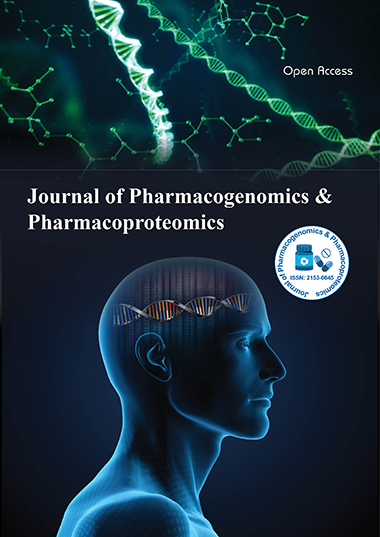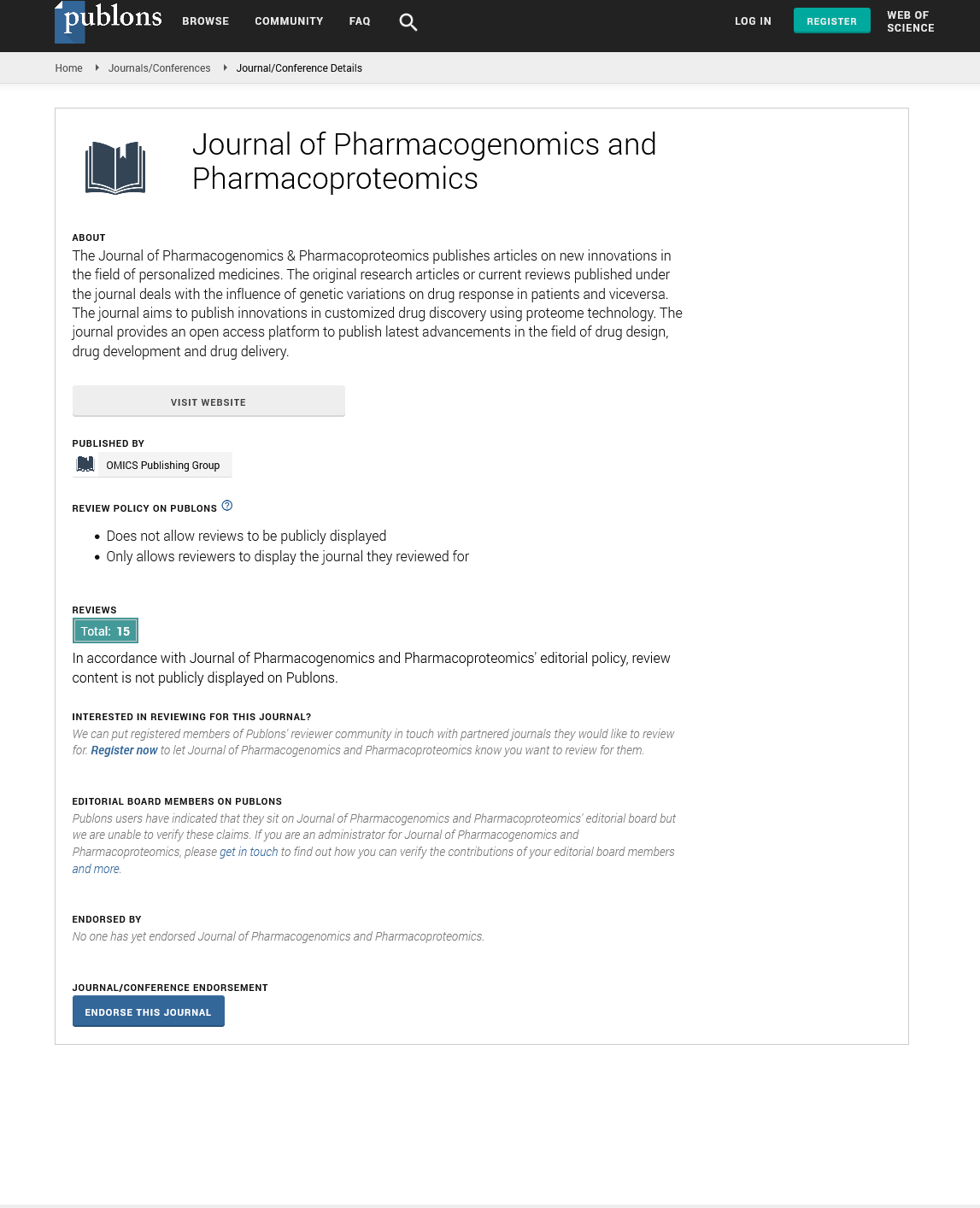Indexed In
- Open J Gate
- Genamics JournalSeek
- Academic Keys
- JournalTOCs
- ResearchBible
- Electronic Journals Library
- RefSeek
- Hamdard University
- EBSCO A-Z
- OCLC- WorldCat
- Proquest Summons
- SWB online catalog
- Virtual Library of Biology (vifabio)
- Publons
- MIAR
- Euro Pub
- Google Scholar
Useful Links
Share This Page
Journal Flyer

Open Access Journals
- Agri and Aquaculture
- Biochemistry
- Bioinformatics & Systems Biology
- Business & Management
- Chemistry
- Clinical Sciences
- Engineering
- Food & Nutrition
- General Science
- Genetics & Molecular Biology
- Immunology & Microbiology
- Medical Sciences
- Neuroscience & Psychology
- Nursing & Health Care
- Pharmaceutical Sciences
Commentary - (2023) Volume 14, Issue 1
Challenges of Implementing Pharmacogenomics to Minimize Herb-Drug Interactions
John Philip*Received: 02-Jan-2023, Manuscript No. JPP-23-20686; Editor assigned: 06-Jan-2023, Pre QC No. JPP-23-20686 (PQ); Reviewed: 20-Jan-2023, QC No. JPP-23-20686; Revised: 27-Jan-2023, Manuscript No. JPP-23-20686 (R); Published: 03-Feb-2023, DOI: 10.35248/2153-0645.23.14.039
Discription
Pharmacogenomics is a promising approach to reducing the risk of herb-drug interactions, but there are still many challenges to overcome before it can be widely implemented. The most significant challenge is the cost associated with testing and implementation of pharmacogenomics. Currently, the cost of genetic testing is relatively high and not always covered by insurance. Additionally, there is a lack of qualified personnel to interpret the results and provide appropriate treatments. Another challenge is the lack of evidence-based data on herbdrug interactions. While there is a wealth of literature on drugdrug interactions, there is little known about the effects of combining herbs and drugs. This makes it difficult to predict potential risks or accurately assess the efficacy of treatments. Finally, there is the challenge of patient compliance.
Many patients are reluctant to take the initiative to get genetic testing or to follow the recommended treatments, making it difficult to effectively implement pharmacogenomics. Despite these challenges, pharmacogenomics has the potential to revolutionize healthcare and reduce the risk of herb-drug interactions. With further research and development, pharmacogenomics could become a widely adopted approach for reducing the risk of these interactions. Examples of Herb-Drug Interactions and How Pharmacogenomics can help Herb-Drug inTeractions (HDT) are a major concern in the medical field and are often difficult to predict. HDIs can cause serious health issues, such as increased risks of side effects or reduced effectiveness of medications. Pharmacogenomics is a field of study that looks at how an individual’s genetics can affect their response to medications and how drugs interact with each other. By understanding an individual’s genetic profile, pharmacogenetics can be used to create personalized drug treatments that are tailored to an individual’s needs and reduce the risk of HDI. For instance, pharmacogenomics can be used to identify individuals who are at a higher risk of experiencing HDI. By using genetic testing, doctors can identify individuals who are more likely to have an adverse reaction to a particular herb or drug. This allows doctors to avoid prescribing the medication or herb to those individuals, reducing the risk of HDI. Pharmacogenomics can also be used to identify potential HDI before they occur. By analyzing an individual’s genetic profile, doctors can determine whether or not a particular herb or drug is likely to interact with another medication. This allows doctors to make better informed decisions about which medications and herbs to prescribe, reducing the risk of HDI.
Lastly, pharmacogenomics can be used to develop more effective medications that are less likely to interact with other drugs or herbs. By understanding how an individual’s genetics may influence their response to drugs, pharmaceutical companies can develop medications that are more effective and less likely to interact with other drugs or herbs. This can help reduce the risk of HDI and ensure that medications are as effective as possible. Overall, pharmacogenomics has the potential to revolutionize the way we think about and manage herb-drug interactions. By utilizing genetic testing and analysis, pharmacogenomics can help identify individuals who are at a higher risk of HDI and develop more effective, less likely to interact medications.
Citation: Philip J (2023) Challenges of Implementing Pharmacogenomics to Minimize Herb-Drug Interactions. J Pharmacogenom Pharmacoproteomics.14:039
Copyright: © 2023 Philip J. This is an open-access article distributed under the terms of the Creative Commons Attribution License, which permits unrestricted use, distribution, and reproduction in any medium, provided the original author and source are credited.

